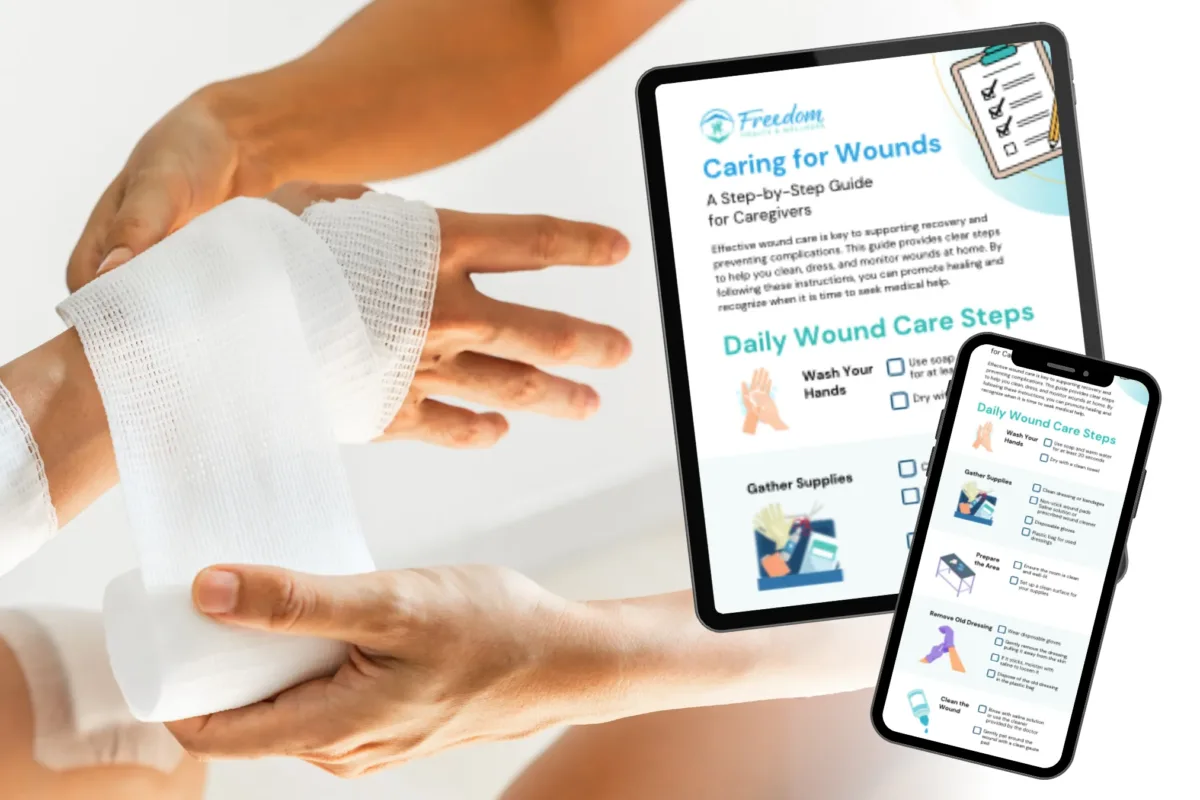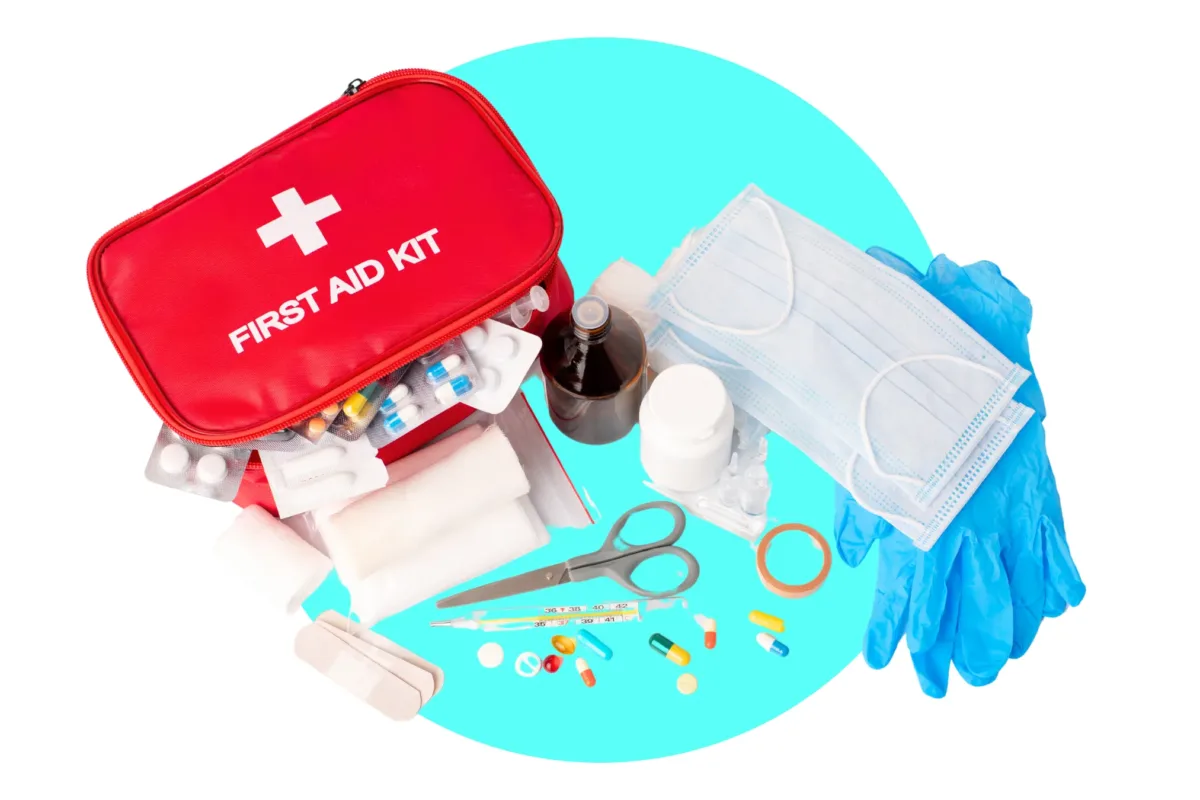 Common Types of Wounds
Common Types of Wounds- Wound Care Checklist for Caregivers
- Why It Matters: The Importance of Proper Wound Care
- Start Today with Our Wound Care Checklist
Caring for a loved one’s wound at home can be difficult, especially if you’re unfamiliar with the proper techniques. Whether it’s a minor scrape or a more serious wound, following the right steps is essential to ensure proper healing and avoid complications. This guide will walk you through everything you need to know to care for wounds safely and effectively.
Common Types of Wounds
 There are several types of wounds that caregivers may need to manage:
There are several types of wounds that caregivers may need to manage:
- Cuts or Lacerations: Deep or shallow breaks in the skin, often caused by accidents or falls.
- Pressure Ulcers (Bedsores): Skin damage due to prolonged pressure on one body area.
- Venous Stasis Ulcers: Sores caused by poor circulation, often on the lower legs or ankles.
- Surgical Wounds: Incisions made during surgery that require careful care to avoid infection.
Wound Care Checklist for Caregivers
When caring for a loved one’s wound, it’s essential to follow a few simple steps to ensure the wound heals properly. Here’s a quick checklist to help guide you through the process:
- Clean the Wound Properly
Wash your hands with soap and water.
Use a sterile cloth or gauze to gently clean the wound with mild soap and water. Do not use harsh antiseptics unless directed by a healthcare provider.
- Apply a Sterile Dressing
Once the wound is clean, apply a sterile bandage or dressing. This helps protect the wound from infection and keeps it moist, promoting healing.
- Monitor for Signs of Infection
Check the wound regularly for increased redness, swelling, or drainage, which may be signs of infection. If any of these symptoms occur, contact a healthcare provider.
- Change the Dressing as Directed
Follow the instructions from your healthcare provider about how often to change the dressing. Some wounds need to be redressed daily, while others need less frequent changes.
- Provide Pain Management
If your loved one is in pain, check with their healthcare provider about using over-the-counter pain relievers or medications to help manage discomfort.
- Promote Healing Through Good Nutrition
Ensure your loved one is eating a balanced diet that supports wound healing. Foods rich in vitamins C and E, zinc, and protein can help the skin repair itself.
- Keep the Area Elevated
If the wound is on the leg or foot, elevating the area may reduce swelling and promote circulation, aiding healing.
Why It Matters: The Importance of Proper Wound Care
 Proper wound care can prevent complications, such as infections, delayed healing, or chronic issues. Staying on top of wound care is essential to ensure your loved one’s comfort and support their recovery.
Proper wound care can prevent complications, such as infections, delayed healing, or chronic issues. Staying on top of wound care is essential to ensure your loved one’s comfort and support their recovery.
Proper wound care can also reduce the risk of further injury or infection. Keeping the area clean, dry, and protected can promote faster healing and help avoid complications that could extend the recovery process. This can bring hope and optimism to both you and your loved one.
Start Today with Our Wound Care Checklist
Use this checklist to ensure you follow the proper steps when caring for your loved one’s wound. This comprehensive guide will help you feel confident and prepared, providing the best care possible at home.
Your care plays a crucial role in your loved one’s healing process. With the proper knowledge and tools, you can help ensure their wounds heal properly and reduce the risk of infection. Your role as a caregiver is invaluable and integral to their recovery.




